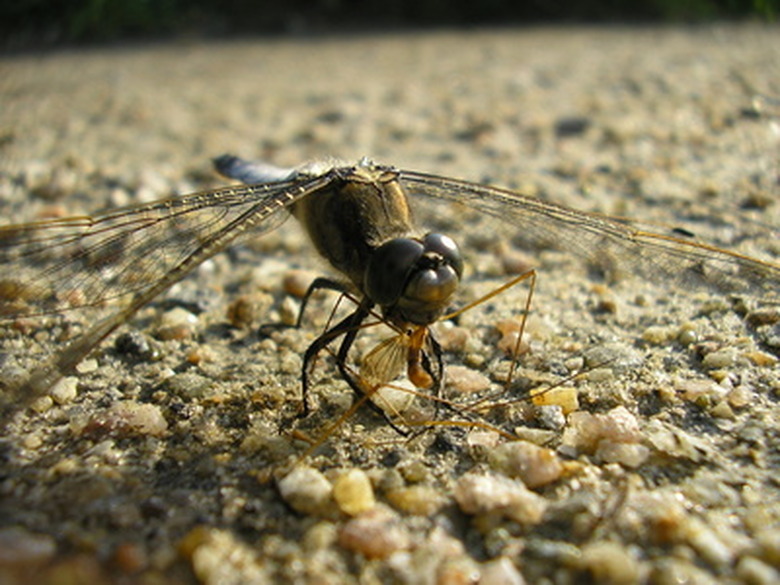How Are Insects Adapted To Living On Land?
Though aquatic insects exist, they do not spend their entire lives truly living in water. All insects breathe air and follow some sort of terrestrial lifestyle. Insects are characterized by having six legs, three body parts and an exoskeleton, which are adaptations that best serve insects out of the water. They are a very successful class of animals that outnumber all other animals in number of species and individuals.
Legs
Legs
All insects are equipped with some form of three pairs of legs branching out from their thorax, the middle segment of their body. These legs have many adaptations, but all are originally designed to help an insect get around in a terrestrial environment. Their ability to crawl, hop, climb and hang onto objects has allowed insects to live in many environments where contact with the earth is necessary.
Exoskeleton
Exoskeleton
Insects have a unique skeletal system: Their skeleton is on the outside of their bodies. This type of structure, an exoskeleton, helps prevent water loss from an insect's body, allowing it to survive well in a terrestrial environment. Its rigid design also protects it from weather and predators found on land. The patterns and colors of exoskeletons can help with camouflage and even mimicry of objects such as leaves and sticks found in an insect's natural environment.
Respiration
Respiration
All adult insects breathe air. They have body parts called spiracles, which are small holes in their exoskeleton that allow air to enter their body. The air then diffuses into a tracheal system of tubes and branches to get oxygen into the cells of an insect. If the environment is arid and dry, the insect can close its spiracles and use the air stored in special air sacs to get water. This adaptation allows insects to be found in almost every terrestrial environment.
Wings
Wings
The development of wings and the ability to fly was a huge part of the success of insects. Most orders have wings, usually in two sets found on the thoracic segment of the body. Diversity exists among insect wings, from the equal-sized pairs of more primitive insects such as dragonflies to the most advanced version of hardened forewings in beetles. Flies developed their second pair of wings into hovering structures called halteres, creating a faster, more efficient way to fly. Insects use the air in a way different from larger animals.
Flight
Flight
Their small size allows insects to use air as a viscous substance and glide through it almost as if they are swimming. They adhere more to fluid dynamics than aerodynamics, creating whirlwinds and eddies by their wing movements as they fly. Though they also may utilize water occasionally for foraging and migration, they can move much farther distances through the air, advancing the class of animals to every continent on Earth.
Cite This Article
MLA
EmilyTrudeau, . "How Are Insects Adapted To Living On Land?" sciencing.com, https://www.sciencing.com/insects-adapted-living-land-6577251/. 22 November 2019.
APA
EmilyTrudeau, . (2019, November 22). How Are Insects Adapted To Living On Land?. sciencing.com. Retrieved from https://www.sciencing.com/insects-adapted-living-land-6577251/
Chicago
EmilyTrudeau, . How Are Insects Adapted To Living On Land? last modified August 30, 2022. https://www.sciencing.com/insects-adapted-living-land-6577251/
